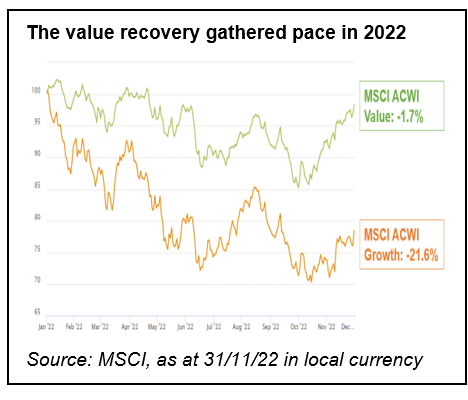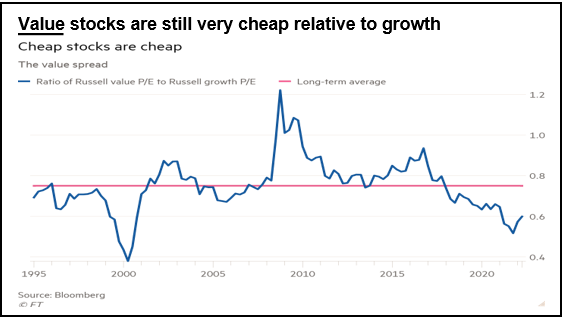November brought continued relief for stock markets as global equities rose for a second consecutive month – the year's longest positive run and sufficient to recoup September's losses. Whatever happens in December, 2022 will go down as a rollercoaster year for investors. Stock indices have lurched from bear to bull markets and the S&P 500 benchmark of US blue-chip companies has seen more daily swings over 1% since the major market dislocations of 2008 and 2002.
Regime change
Following 18 months of steady gains on the back of COVID stimuli, the return of market volatility this year reflects investors' struggle to deal with regime change. After years of ultra-low interest rates, quantitative easing and globalisation helping to keep inflation down, the new paradigm – whether we like it or not – is an environment of higher inflation and borrowing costs.
The shift in sentiment from greed to fear has seen markets driven by macroeconomic data as central banks have balanced taming inflation with limiting the economic damage from monetary tightening. Geopolitical events like Ukraine and elections in Italy and Brazil have also influenced stock prices more than corporate developments.
Thankfully most of the market fall appears to be behind us. Fresh inflation data in the US and Europe has signalled that price rises are slowing and although we are likely to see earnings downgrades in the coming weeks as economic reality bites, I believe these are already reflected in lower share prices to a large extent.
While markets look set to remain volatile in the short-term, as soon as we see confirmation of a recession – soft or hard – I believe markets will find their feet and we will enter a new cycle of positive returns. In Europe we are probably already there and most economists expect the US to succumb within the next 12 months.
Investors take comfort from certainty and the economy finding its feet – even without GDP growth – should see share prices bid higher. Political stability will also help with 2023 expected to be the first year this century without major elections in G7 countries.
Back to the old normal
Amid the turmoil of 2022 it has been easy to overlook the continued dominance of value over growth, with the former outperforming by a huge 20 percent so far this year (see chart below). While value has been boosted by a strong energy sector, rising interest rates have caused investors to seek higher returns and growth stocks that were previously thought to be fairly valued have de-rated. High risk assets like meme stocks, cryptocurrency, SPACS and Chinese real estate which rose to stratospheric levels thanks to the stimulus of the previous regime have fallen even further.

I believe this trend will continue through 2023.
Even after a very strong year in relative terms, value is still priced at an above average discount to growth. In the US, value stocks have a forward P/E of 15.4x versus 26.2x for growth; a ratio of 0.6 (see chart below). A return to the historic average of 0.75 would see value rising by around 30% or growth falling by 20% – an even greater margin of outperformance than we have seen in 2022[1].

As well as being cheap, the new regime of persistently higher inflation is supportive for value – I believe it will be some time before we see annual price rises of only 2% again. It is also easy to forget that the environment since 2008 of negligible (or even negative) interest rates is the exception rather than the rule. Money is valuable and until the Global Financial Crisis had an associated cost.
A return to 'normal' interest rates should ensure capital is allocated efficiently. Investors will avoid over-hyped, loss-making technology businesses in favour of companies making genuine profits using tangible assets in sectors like commodities, metals, financials and industrials. Under the new regime, having the skills and knowledge to identify and analyse these undervalued companies will be a huge advantage.
With wide-ranging investment possibilities from China's reopening, the US infrastructure bill and rebuilding Ukraine, broad mandates will also be key. Finally, I believe that courage and patience will be rewarded, for example by taking opportunities in unpopular countries like the UK and Japan or overlooked sectors like real estate.
The new investment environment means active bargain hunters like SKAGEN now have better prospects than at any time over the past 15 years. With market conditions more akin to the long periods when value investing reigned supreme, we could be returning to the old normal.
[1] As at 30/11/2022. Russell 3000 Value Index (P/E 15.1x) vs. Russell 1000 Growth Index P/E (26.2x). Assumes stable earnings.




